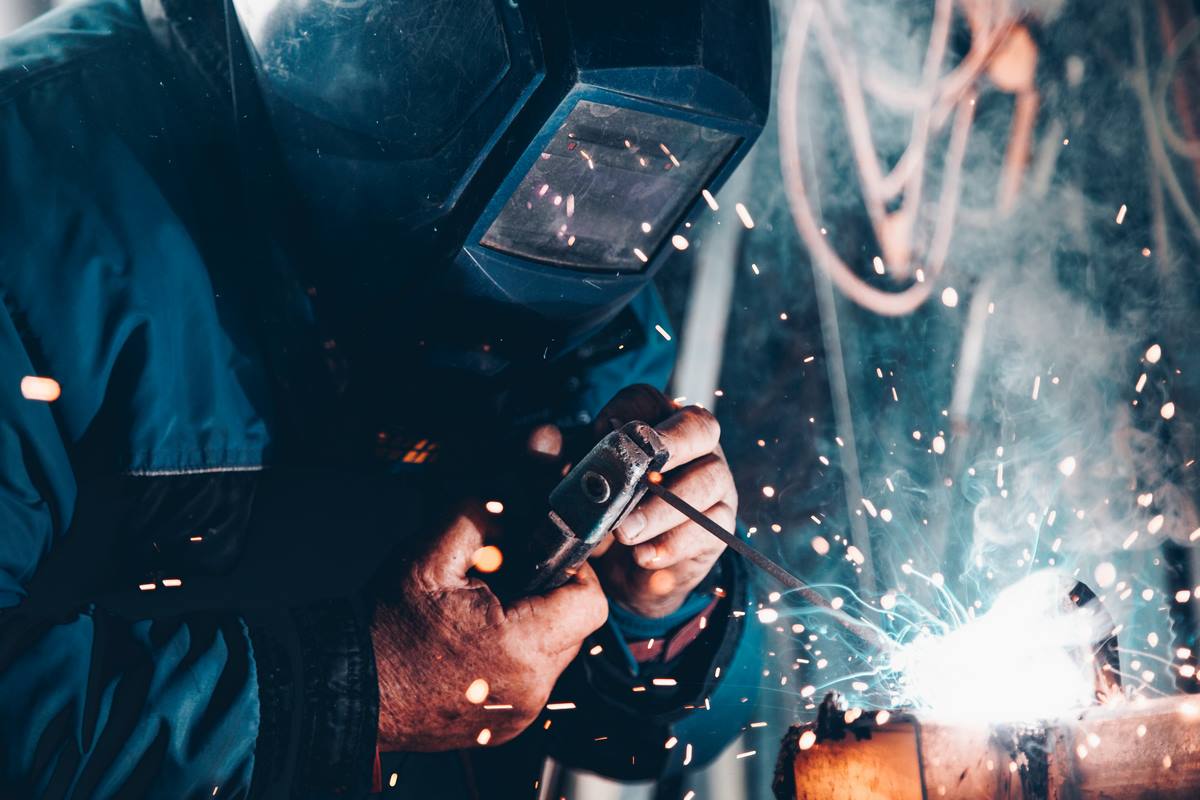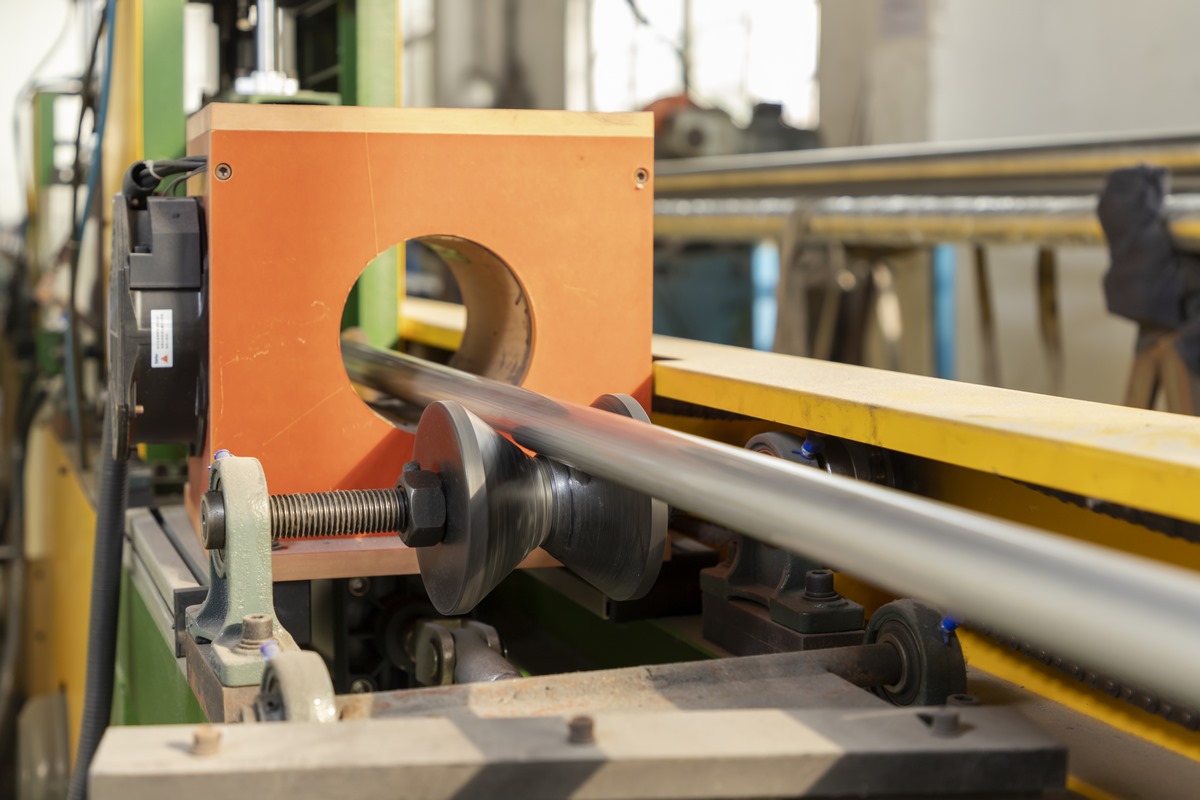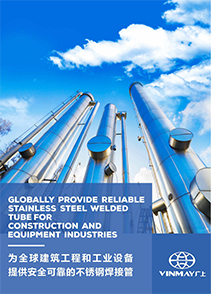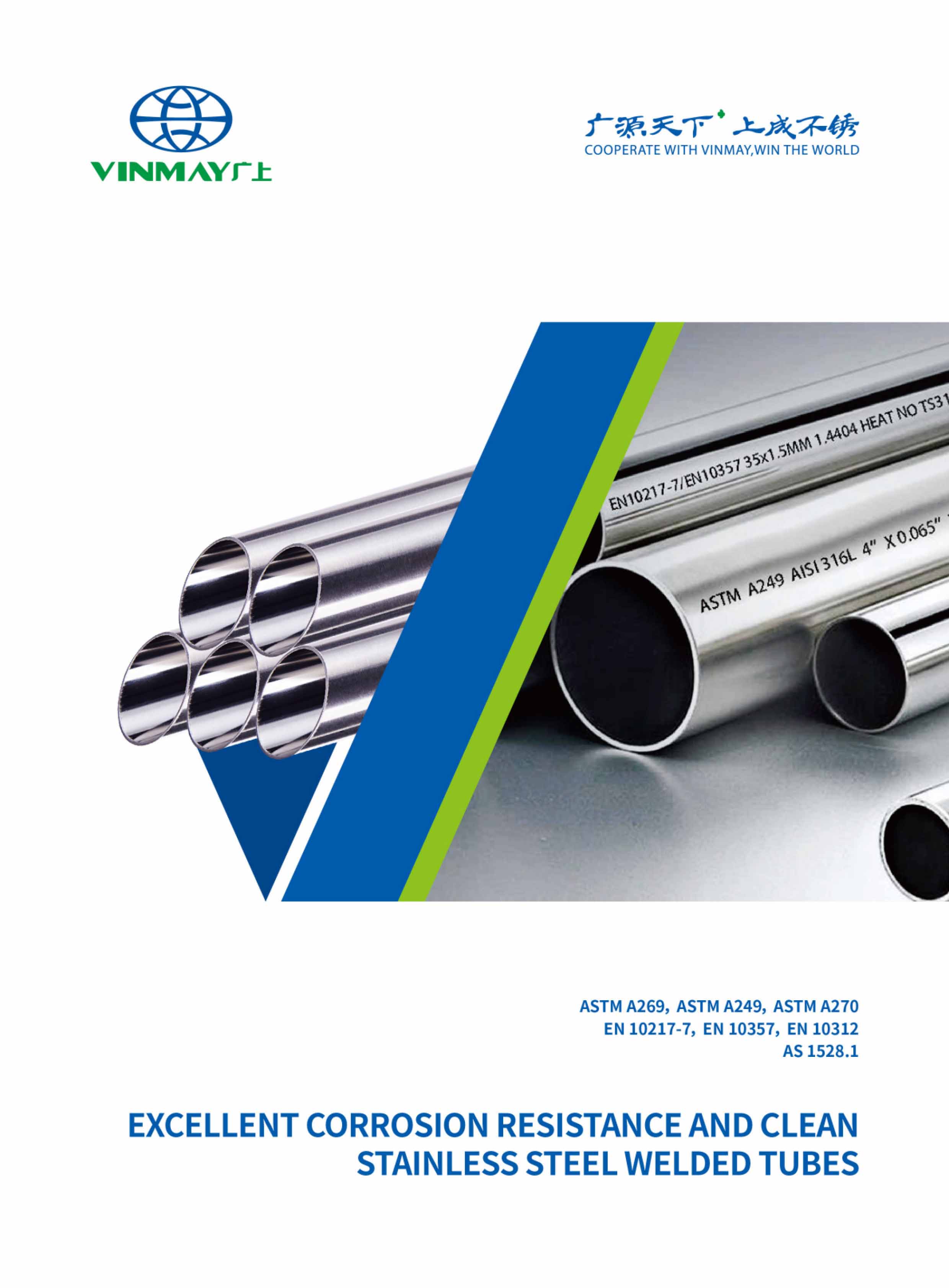
Welding, often described as the art of joining metals, is a skill that spans the entire industrial spectrum. It's a fusion of science and craftsmanship, precision and expertise, that's essential in countless applications. And when it comes to the world of welding, one area that stands out for its significance and challenges is "Stainless Steel Tubing Welding."
Stainless steel, known for its remarkable corrosion resistance and durability, is a favored material across various industries. From architectural structures to aerospace components, food and beverage equipment to medical devices, stainless steel tubing plays a pivotal role. However, working with stainless steel isn't without its complexities.
This article will provide readers with a comprehensive guide to mastering stainless steel tubing welding. Whether you're an aspiring welder, a seasoned professional, or someone curious about the art and science behind this process, you've come to the right place.
We'll delve into the fundamentals of stainless steel tubing welding, explore the choice of alloys, address safety concerns, and master the techniques required for precise and robust welds. From heat control to quality inspection, this blog will equip you with the knowledge needed to tackle stainless steel tubing welding projects with confidence.
Key Takeaways
Before we dive into the intricacies of welding stainless steel tubing, it's crucial to establish a solid understanding of the stainless steel tubing. This foundation will serve as a springboard for your journey into the art and science of stainless steel tubing welding.

Stainless steel tubing is a type of hollow, cylindrical structure made from stainless steel. It is an alloy that contains a minimum of 10.5% chromium, which forms a passive oxide layer on the surface. It is used in an array of applications across industries due to its exceptional qualities, particularly its resistance to corrosion and staining.
Stainless steel tubing finds its utility across diverse industries, thanks to a multitude of advantages it offers. Below are some compelling reasons that make stainless steel tubing the material of choice in various applications:
According to the American Welding Society (AWS), the welding of stainless steel tubing is a meticulous process, demanding precise control over heat management and the selection of appropriate filler materials. It stands as an indispensable method employed in the manufacturing and construction of diverse products spanning various industries. This process effectively unites stainless steel components, yielding robust and dependable connections.
The role of stainless steel tubing welding holds paramount significance in industries such as aerospace. In these sectors, the integrity of welds stands as a linchpin for ensuring both safety and performance. The craft of welding stainless steel tubing is a fusion of precision and rigor, given the unique characteristics of the material that necessitate careful handling.
In the ensuing sections of this blog, we will embark on an exploration of the multifaceted facets of welding stainless steel tubing, ranging from the meticulous choice of alloys to the mastery of essential techniques. The pursuit of the flawless weld in stainless steel is not merely an art; it is, in fact, a science. Our goal is to serve as your steadfast guide through this intricate journey.
Welding stainless steel tubing has a wide range of applications in various industries. It is used in the production of pipework, pressure vessels, and boilers, as well as in the fabrication of heavy machinery and equipment.
Stainless steel tubing is also used in the food and beverage industry, as its smooth surface and non-reactive properties make it ideal for the manufacture of containers, processing tanks, and other equipment. Additionally, it is used in the construction industry for the fabrication of handrails, staircases, and balconies.
Here's a table listing the various applications of stainless steel welded tubing, along with their specific uses and the advantages that make stainless steel the material of choice in these industries.
Industry | Uses | Advantages |
Aerospace | Aircraft components, fuel lines, hydraulic systems | High strength, resistance to extreme conditions |
Automotive | Exhaust systems, structural components, brake lines | Corrosion resistance, high-temperature tolerance |
Chemical Processing | Pipelines, reactors, heat exchangers | Resistance to corrosive substances |
Food and Beverage | Dairy processing, brewery equipment, conveyance systems | Hygienic properties, corrosion resistance |
Pharmaceuticals | Drug manufacturing equipment, cleanrooms | Hygienic properties |
Marine | Boat rails, handrails, underwater equipment | Resistance to saltwater, corrosion resistance |
Oil and Gas | Pipelines, offshore drilling, petrochemical processing | Corrosion resistance |
Construction | Handrails, support structures, decorative elements | Strength and polished appearance |
Medical Equipment | Surgical instruments, hospital beds, diagnostic machinery | Sterilizability, durability |
Transportation Infrastructure | Bridges, railings, subway systems | Corrosion resistance, longevity in various climates |
Water conveyance, treatment chemicals | Resistance to corrosion for maintaining water quality |
Due to its strength, durability, and corrosion-resistant properties, stainless steel tubing is a viable option for many industrial applications. It is easy to fabricate and can be welded to create complex shapes and structures. The material is also economical and recyclable, making it a cost-effective solution for many projects.
Read More:
Mastering Sanitary Stainless Steel Welding: Techniques and Tips

Welding stainless steel tubing is an intricate process, and one of the fundamental considerations that can significantly impact the outcome is the choice of the stainless steel alloy. Stainless steel is not a one-size-fits-all material; it comes in a variety of alloys, each with its unique properties and applications. Selecting the right alloy is paramount for welding success.
Stainless steel alloys are categorized based on their composition, with the most common categories being austenitic, ferritic, and martensitic. Each category has its distinct properties, making it suitable for specific applications.
Austenitic stainless steel is known for its excellent corrosion resistance and formability, this category includes grades like 304 and 316. It's the top choice when hygiene and chemical resistance are paramount. This type of stainless steel finds its home in the food processing industry and medical devices, where cleanliness and safety are non-negotiable.
Ferritic stainless steel alloys have magnetic properties and provide good corrosion resistance, particularly in less aggressive environments. Their magnetic nature makes them valuable in automotive applications, where compatibility with various sensors is essential. Additionally, they are used in architectural elements requiring structural integrity and magnetic responsiveness.
Martensitic stainless steel alloys are known for their heat-treatable nature and high strength. This unique quality allows them to be hardened through heat treatment processes, making them ideal for cutlery like knives and scissors. In the industrial sector, they are used in high-stress components such as pump parts and valves. Martensitic stainless steel is also employed, to some extent, in aerospace applications for its durability under high-stress conditions.
Here's a table listing different stainless steel alloy types and their characteristics:
Alloy Type | Characteristics |
Austenitic Stainless Steel |
|
Ferritic Stainless Steel |
|
Martensitic Stainless Steel |
|
This table provides a concise overview of the key characteristics of each stainless steel alloy type, helping you make an informed choice when selecting the right alloy for your welding project.
According to ASTM International standards, common grades of stainless steel used in tubing include 304, 316, 321, etc. Each with its unique properties and applications. Now, let's delve into some of the common stainless steel grades specifically used in tubing applications:
By understanding the characteristics of these common stainless steel grades, you can make an informed decision when selecting the right alloy for your tubing project. Let's now move on to the process of selecting the most suitable alloy for your specific welding project.
Recommended: Stainless Steel Pipe Welding Standards
Welding is a crucial step in working with stainless steel tubing. It's the process that joins two pieces of tubing, creating a strong, lasting connection. Proper welding ensures the integrity of the tubing, making it essential to understand the welding process and choose the right method for your project.
When it comes to welding stainless steel tubing, there are a variety of methods to consider. The type of welding process chosen will depend on the grade of stainless steel, the size of the weld tube, and the application.
The two main types of stainless steel welding methods are fusion welding and resistance welding. Let's explore these methods in detail.
Fusion welding is the process of combining two pieces of metal by heating them to the point of melting. Fusion welding can be used on thin and thick stainless steel tubing. Common fusion welding processes for stainless steel tubing include:
TIG welding is renowned for its precision and control. It involves a non-consumable tungsten electrode and an inert gas shield. This method is ideal for applications that require clean, high-quality welds, such as those in the food processing and medical device industries.
MIG welding is valued for its ease of use and efficiency. It uses a wire electrode and a shielding gas, typically argon or a mix of argon and carbon dioxide. MIG welding is versatile and suitable for stainless steel tubing, making it a popular choice for various applications.
Learn More : The Different of Stainless Steel Pipe TIG Welding and HF Welding
Plasma Arc Welding is similar to TIG welding but uses a more focused, high-energy plasma arc. It's known for its precision and is often used in applications where fine control is required, such as aerospace components and medical devices.
Gas Shielded Flux-Cored Arc Welding (FCAW-G) is an alternative to traditional MIG welding. It uses a tubular wire electrode with a flux core, eliminating the need for external shielding gas. This technique offers the advantages of MIG welding, including high productivity and efficiency, and is suitable for stainless steel tubing applications.
Submerged Arc Welding involves submerging the arc and the workpiece beneath a layer of granular flux. This method is highly efficient and is often used for thicker stainless steel tubing.
SMAW, commonly referred to as stick welding, involves using a consumable electrode covered with a flux. An electric arc is created between the electrode and the workpiece, melting both the electrode and the base metal. Stick welding is robust and can be used in outdoor and adverse conditions, but it may not provide the same level of precision as TIG or MIG welding.
Laser welding is a high-precision method that uses a focused laser beam to create the weld. It's suitable for fine and intricate work, often seen in the medical and electronics industries.
Resistance welding is the process of joining two pieces of metal together through the use of heat and pressure. This type of welding is typically used for thin-walled tubing.
Spot welding involves creating a series of welds at specific points on the tubing. It's a fast and cost-effective method, often used in applications that require efficient welding.
Seam welding creates a continuous weld along the length of the tubing. This technique is suitable for thin-walled stainless steel tubing and ensures a robust, leak-proof joint.
Projection welding is ideal for creating welds at designated points on the tubing. It provides controlled and consistent results, making it a valuable method for various applications.
Resistance butt welding is commonly used to join the ends of stainless steel tubing. It involves applying heat and pressure to create a solid joint.
Before commencing any welding, it's essential to thoroughly clean the stainless steel tubing to remove contaminants and oils. This preparation ensures a strong and safe weld. Additionally, welding should be conducted in a safe and well-ventilated environment to minimize potential hazards.
By selecting the appropriate fusion or resistance welding technique and following best practices, you can confidently weld stainless steel tubing for a wide range of applications.
Selecting the right welding method for your stainless steel tubing project depends on various factors, including:
Understanding the various welding methods and considering your project's unique requirements will help you choose the right welding process for your stainless steel tubing.
Now that you have a solid understanding of the welding process and have chosen the ideal method for your stainless steel tubing project, the next step is to prepare effectively for the welding process. In the upcoming section, we will guide you through the essential steps involved in preparing for a successful welding operation.

Proper preparation is crucial for achieving strong and flawless welds in stainless steel tubing. Ensuring that both your materials and equipment are ready will set the foundation for a successful welding process.
By efficiently preparing your equipment and materials, you enhance the quality and durability of your stainless steel tubing welds while ensuring a safer and more efficient workflow.

Step 1: Thorough Preparation for Impeccable Welds
Step 2: Tack Welding
Step 3: Root Pass Welding
Step 4: Fill and Cap Welding
Step 5: Cooling
Step 6: Cleaning
By meticulously adhering to these step-by-step instructions, you pave the way for strong, durable welds that meet the most stringent of demands. For any stainless steel welded tube manufacturer, this attention to detail in the welding process is crucial for guaranteeing the structural integrity and longevity of the tubing assemblies. In the following section, we will explore quality control and inspection methods to ensure the final weld's reliability.
You may also like:
Stainless Steel Welding Procedure Specification
How to Weld Stainless Steel Tubing like a Pro

Ensuring the quality of stainless steel tubing welds is a critical step in the welding process. A variety of methods can be used to inspect welds and identify common defects, as well as strategies for addressing them.
This section will discuss the techniques and best practices for quality control and inspection.
In order to guarantee the quality of stainless steel tubing welding work, it is essential to properly inspect welds and implement quality control measures.
Visual inspection, radiography, and destructive testing are all useful techniques for inspecting welds and ensuring quality:
By utilizing quality control measures and thorough inspections, welders can identify common defects in their stainless steel tubing welding work and take steps to address them.
Common defects include porosity, lack of fusion, and slag inclusions. Porosity is caused by gas entrapment in the weld and can be addressed by using a lower current setting and/or increasing the gas coverage.
Insufficient fusion can be addressed by increasing the heat input and welding speed. Slag inclusions can be addressed by using a better cleaning technique before welding and by increasing the travel speed.
All of these defects can be identified early and addressed by making adjustments to the welding procedure. Quality control measures and inspections are essential for ensuring the best quality welds on stainless steel tubing.
Welding stainless steel tubing can be both an art and a science, demanding precision and expertise. To ensure successful welds, it's crucial to recognize and address common challenges that may arise during the welding process.
In this section, we'll explore the most prevalent issues faced by welders and provide practical solutions and troubleshooting tips to help you overcome them.

Controlling heat is vital in stainless steel welding, as excessive heat can lead to distortion and weakening of the material. To manage this:
Welding intricate joint designs can be challenging, especially when access is limited or the geometry is complex. To navigate these issues:
Maintaining the structural integrity of stainless steel tubing while ensuring the quality of the weld is a delicate balance:
After welding, the work isn’t over. Ensuring the longevity and performance of your welds requires careful post-weld treatment:
By understanding these common challenges and following these solutions, welders can enhance their expertise and produce superior stainless steel tubing welds. Mastery of these techniques will contribute to the longevity and quality of your welded structures.

Welding stainless steel can be a complex process, and many beginners have questions. Here are some common inquiries and answers that shed light on welding this challenging material.
Yes, stainless steel can be welded, but it requires skill and expertise due to its unique properties.
Welding stainless steel can be more complex than welding other materials due to its unique properties. It requires attention to detail and specific techniques to achieve high-quality welds.
Yes, stainless steel can be welded to other metals. Common combinations include stainless steel to carbon steel and stainless steel to low-alloy steel, depending on the application.
Welding thin stainless steel requires attention to heat control and a focus on preventing warping or burn-through. Using appropriate filler materials and techniques is essential for success.
Improving your skills in welding stainless steel requires practice, training, and familiarity with the specific requirements of the material. Continuous learning and hands-on experience will help you become proficient in this challenging field.
Success in stainless steel welding demands precision and a strategic approach. These ten vital tips will help you weld stainless steel effectively:
1. Control the Heat
Overheating can cause distortion and weak welds, so carefully manage heat input.
2. Opt for a Smaller Filler Diameter
Using a smaller filler diameter allows for better control of the weld puddle and minimizes overheating risks.
3. Perfect the Fit-Up
Ensure accurate alignment and spacing before welding to prevent gaps and inconsistencies.
4. Match Filler Material with Stainless Steel Alloy
Always choose a filler material that matches the alloy type and grade of the stainless steel for optimal results.
5. Master Torch Angle
Maintaining the correct torch angle is essential for quality results.
6. Adjust Wire Stick-Out
Proper wire stick-out distance is crucial for wire feed and arc stability.
7. TIG Weld Puddle Control
Maintain control over the TIG weld puddle to produce clean, high-quality welds.
8. Consider a Higher Deposition Rate
In larger projects, increasing deposition rates can improve welding efficiency.
9. Monitor Travel Speed
Adjust your travel speed to ensure consistent penetration and weld bead quality.
10. Prevent Rust
Use stainless steel brushes and dedicated tools during welding to avoid rusting and contamination in the welding area.
By following these tips, you can enhance your stainless steel welding skills and take on a wide range of stainless steel projects with confidence.
You may also like:
Should you require stainless steel tubing welding services or seek expert guidance, don't hesitate to connect with us at Vinmay. Vinmay, a leading stainless steel welding tube factory, offers top-quality stainless steel tubing for various applications. Our team of skilled professionals is equipped to handle a wide range of projects, from healthcare equipment to architectural structures.
At Vinmay, we understand the unique demands of stainless steel tubing welding. Our precision and dedication to quality ensure that your projects benefit from the best welding techniques, superior material selection, and exceptional craftsmanship. Partner with Vinmay for stainless steel tubing welding excellence.
Contact us today to discuss your specific needs and explore how Vinmay can contribute to your success.



